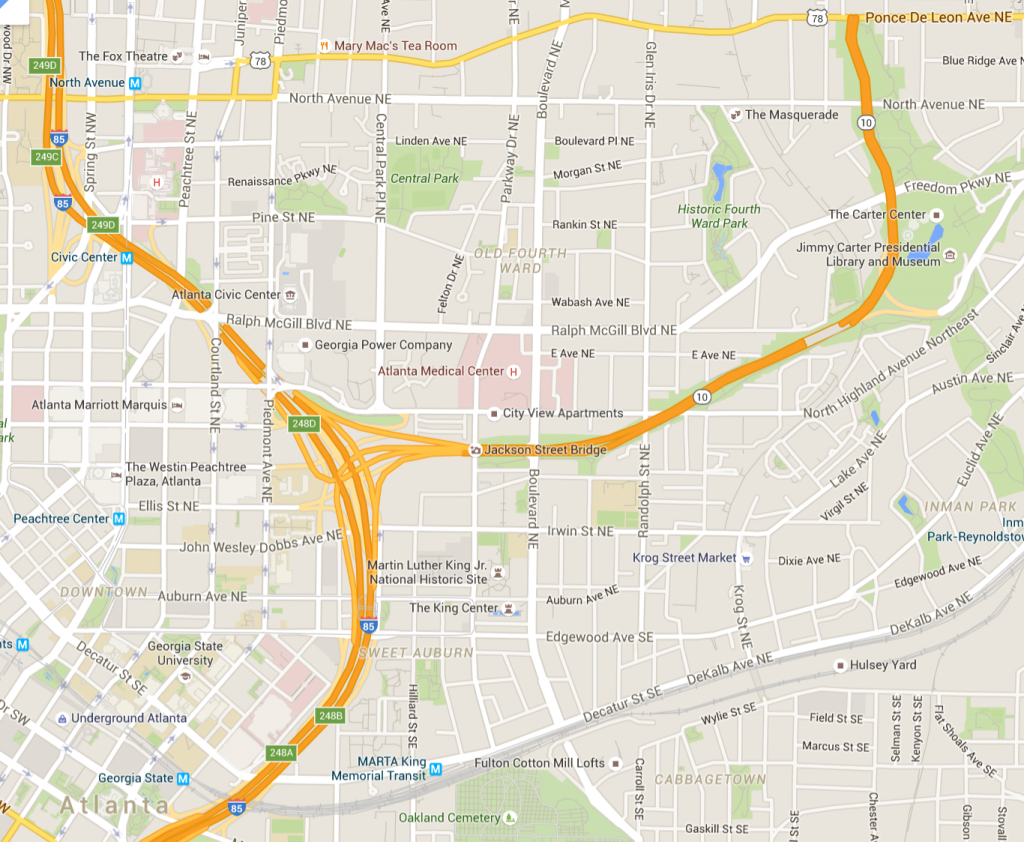50 years ago, unrest swarmed in Black Atlanta neighborhoods. Residents were being forced out of their homes for the construction of the Freedom Parkway, a 4 lane highway that was to intentionally run through Sweet Auburn and Old Forth Ward. This highway along with the Downtown Connector cut those two overwhelmingly African American neighborhoods in half.
The expressway caused tensions to grow in neighborhoods, families to move away to prospering places like West Atlanta, and businesses to close. This concept was further researched in Old Forth Ward by Parama Roy, a Geo-sciences professor at Georgia State University. In his research he concluded that, “the obvious tension in a gentrifying neighborhood where the needs of the incoming young white middle-class residents hardly match with the needs and concerns of the long-term relatively lower-income and mostly racial minority residents. Also it makes it evident how the discourse of the whole neighborhood’s common wish allows the need of a selective few to represent the so-called common good.”
Sarah Schindler, an associate professor at the University Of Maine School Of Law, would call Freedom Parkway a form of Architectural Exclusion. This can be understood as elements in architecture that is used to exclude a certain group of people. The Freedom Parkway is an example because it acts as a geographical barrier that makes it difficult for families to enter and exit the city. Over time, a solution to this problem was addressed. Two bridges, Randolph Street Bridge and the Jackson Street Bridge, two connections between Highland Ave and Irwin St, were built.
What they didn’t know was that, in a few decades, the Jackson Street Bridge would gain a sight that would become iconic for Atlanta’s skyline. Tourists and aspiring photographers who want an awesome picture of Atlanta will come this place. Atlanta’s tourist website, www.atlanta.net, even has a step-by-step guideline on how to take a selfie with the view on the bridge. This image has even shown up in popular culture. The Walking Dead, a popular American drama series, has used the Jackson Street Bridge view on its poster.
The Jackson Street Bridge and the Freedom Parkway is a silent product of gentrification that has destroyed a huge part of Historic Black Atlanta. Splitting two prosperous neighborhoods in half and separating it from the city does not implicate positive long lasting effects. Those two neighborhoods are still filled with poverty, boarded up businesses, and weather-beaten buildings. The most important context of this bridge that often goes unnoticed is that it took bulldozing thousands of families’ homes to create the most favored picturesque view of Atlanta. Atlanta may brand this image as their logo but they probably won’t promote the history behind it.




